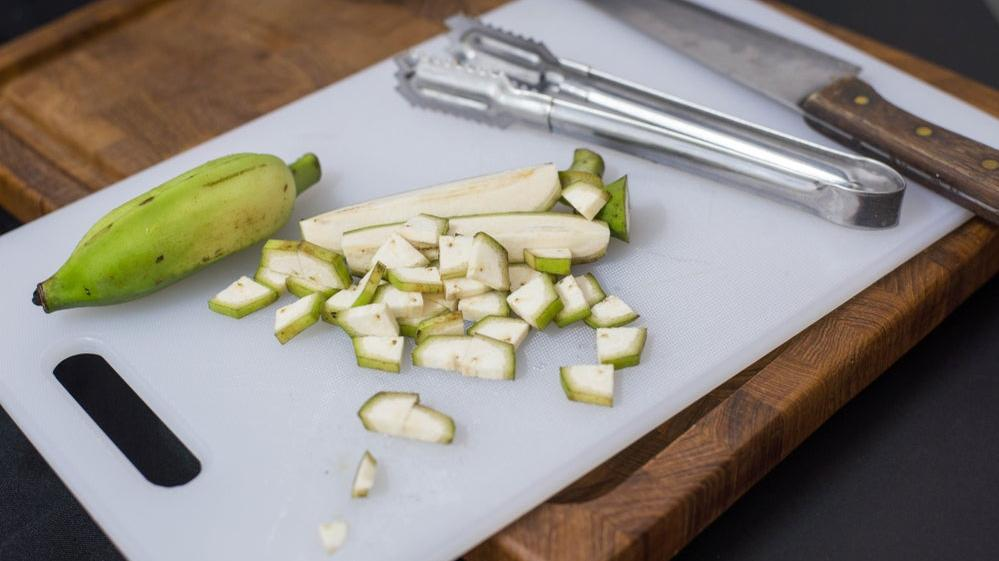This Kitchen Tool Creates More Waste Than We Thought
Every little chop or slice creates more plastic waste.
We've all become familiar with the potential dangers of microwaving plastic, as heating these materials can cause them to shed indigestible microplastics that eventually make their way into your body. And just this year, a new study has found that even before microplastics have a chance to leach into your leftovers, they might already be on your food in the prep stage.
A study from researchers at North Dakota State University has found that using plastic cutting boards can cause microplastics to cling not only to the knife and board, but also the food being sliced there. To conduct the study, researchers bought 20 plastic cutting boards from Amazon, including wooden boards to serve as the control.
Researchers first had participants in the test mimic 500 chopping strokes on the boards without any actual food between the knife and the board. Then, participants chopped carrots on the plastic boards, rinsed the plastic boards, and dumped the sliced carrots into a glass tray filled with water to be examined.
"We estimate the release of 1 to 14 microplastics per cut from polyethylene cutting boards and 3 to 15 microplastics per cut from polypropylene," said Himani Yadav, who led the study, to Outside magazine. "Our study assumes that the average person makes 500 cuts per day on a board, or over the course of a year, 128,000 cuts. Given those numbers, the cumulative microplastics exposure ranges from 7.4 to 50.7 grams per year."
Outside notes that a credit card weighs about five grams, which means, on the higher end of this estimate, about 10 credit cards' worth of plastic per year is shed from the average person's plastic cutting board onto their knives and food.
What to use instead of a plastic cutting board
My personal understanding has always been that wood or bamboo cutting boards are for things like vegetables and cheese, whereas plastic boards are better for handling raw meat and fish. This way the bacteria from the raw meat and fish would be easier to wash away afterwards and wouldn't absorb into the wood.
Although there is some accuracy to this notion, there are better options out there that could help you avoid the issue of microplastic contamination in your food. If you've had your plastic cutting board for a while, you may have noticed the color becoming dingy over time, no matter how many washes it has undergone. And you might've also noticed the scratches or lines from where you've used your knife on the board. These marks are normal wear and tear, but, as explained above, they're also a sign of the material degrading and potentially getting into your food.
Consider a rubber cutting board in place of your old plastic board. When polled by Bon Appétit, professional chefs said rubber cutting boards are a favorite in the industry because of their durability. Rubber boards are also easy to clean and do less damage to knives than other board materials. The only downside, per the professionals, is that rubber boards don't look as cool as the other boards. But if it keeps you from ingesting thousands upon thousands of microscopic plastic shards, I'd say it's worth losing some cool points.
